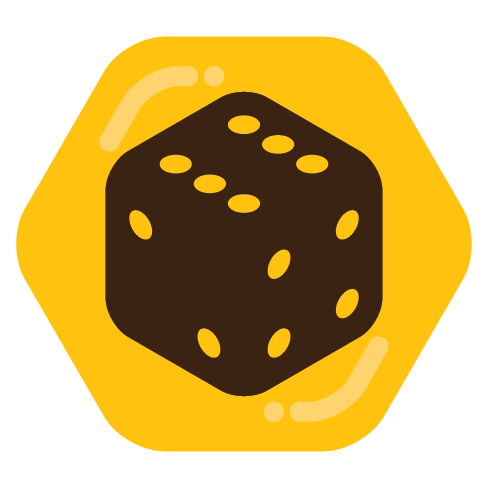

I’ve been sitting pretty with both uBlock Origin and uMatrix stopping both the ads and the delay from YouTube. Not sure what exactly is doing which, but it’s been working for me
Just a dog chasing cars. Varied and various hobbies, including but not limited to: rock climbing, ttrpgs, reading, cooking, leatherworking, ceramics, model-building, wargaming, video-gaming, brewing, etc., etc.


I’ve been sitting pretty with both uBlock Origin and uMatrix stopping both the ads and the delay from YouTube. Not sure what exactly is doing which, but it’s been working for me
Switch to calzones, they’re better.


The only thing stopping them is their own incompetency. Truly a thin wall, but as their older generations start dying off we’ll see that wall broken down.


Which, as history shows, is a tenuous proposition at best.


Quick, tell him that on Twitter! Maybe he’ll actually do it and we’ll finally be rid of his godawful grandstanding.


My suggestion for balancing encounters? Don’t. As long as the monsters and traps feel appropriate, full balancing is unnecessary. There’s a couple reasons for this. One, your players will escape or beat situations in ways that you could never have imagined, and; two, if things get too hard and everyone’s really struggling, you can scale back the encounter and even fudge dice rolls if it makes narrative sense to do so. Deus Ex Machina is not off the table either, for D&D at least. Remember, your players are heroes: something saving them right as all hope was lost is par for the course. The only time characters should die permanently imo is when it makes for a compelling story.


Standard combat in D&D is based off of an old system where the tension comes from a survival-horror “will I die before I escape with the loots?” feeling, which means combat is supposed to be dangerous, punishing, and generally a bad idea. Most people today don’t enjoy that style of gameplay and are more interested in the narrative side of play. This makes combat a chore because it drags the players out of making interesting choices narratively and doesn’t replace it with anything. Combat doesn’t have that cloak of survival surrounding it, making it feel hollow and tacked-on.
The biggest thing for me to counteract that is giving people the ability to “fail forward.” Not an original idea by any means, but I get the feeling that most people play D&D with a, “I roll to hit, miss, whoops that’s my turn” sort of vibe. Admittedly there’s no mechanic in a regular D&D game to facilitate this, but I like borrowing from Blades in the Dark with their clock system. Instead of failing to hit, the player hits, but it initiates some kind of countdown timer for something else happening in the fight or elsewhere. This gives me the ability to build tension in the fight while also giving me reasonable control over the length of the fights as well.
I like your implementation of Luck Dice; it seems to balance out some of the feel-bads while giving players options. I don’t know if it addresses the core problem of misses in combat, but at least players won’t feel like they’re not going anywhere with a string of bad rolls. It also neatly fits into the heroic fantasy aspect of characters being better than most people and nothing can truly keep them down. It might be interesting to give your big bads Luck Dice too to make them feel more scary instead of doing lair/legendary actions. Let us know how it goes when you run your game!


Honestly, I would just wait for the revamped Warhammer Fantasy and see if it’s something you would want to play. AoS is significantly different rules-wise, so it might not be worth investing in if you’re not sure. I would do a test-run a couple times using the AoS Skirmish rules.


one of the players is DMing a few sessions of something from the Wild Beyond the Witchlight book.
I loved playing through Wild Beyond the Witchlight! It’s such a clear departure from most of the modules that Wizards puts out.


My week was pretty limited. I was extremely busy IRL last week, but I did find time for a few things.
Magic: the Gathering: Thursday saw me at my LGS doing a bit of Magic. The games went okay, but I’ve come to expect very little in the way of enjoyable/interesting fights so I may not be going back for a while. Someone pulled out a Kingmaker deck right at the end too, so there was basically no reason for other people to play. sigh
D&D 5E: The four of us (1 DM 3 players) actually managed to get together to play some of our Dragonlance campaign, which went very well! We’d split the party in the previous session, which involved my main character hiring a couple people (the other players) to track down the Dragon Army and go with him, whilst my side character is leading the other two to Mount Nevermind to go save her sister. We played out the Dragon Army-tracking this week, and ran into a town situated on the back of a skeletal dragon. Now we have some answers on how their leadership works, and can prepare for a second invasion of Kalaman. I tend to play more NPC-style characters, so I was loving it! It helps that I’m the only one besides the DM who likes roleplaying, which means I tend to take a more active role in shaping the story then the other two players.
Mini Wargaming: I painted up a bunch of army dudes for Bolt Action, on commission, and they came out great. Can’t wait to do the rest of the guys; it’s only a small platoon of 25 plus an armored half-track, but even still I haven’t been able to paint in a while due to college so I’ll take what I can get. I’ve never had to do camo before, so I’m experimenting with new techniques.
Wushu: Finally, Wushu. This is a two-player version, but we went all-out on the terrible Ramen Oni and his Noodly Apendages™! He attacked us with his cultist-ninjas at the tea-house we were staying at and escaped with the magical flower from an ancient tree there. Hijinks ensued when we followed him to his hidden temple, where we were nearly sucked into the Ramen Realm and had to tear out his “heart.” He made us promise to save his family, then collapsed into a pile of noodles. Very enjoyable, no DM needed, would recommend.
Bonus Question: I have been desperately searching for a copy of Betrayal Legacy. All of the haunts in Betrayal are fun and pretty easy to understand, but the game still grows as you play.


My main tip would be to not dwell on any one scene for too long. Keeping a game fast-paced is a good way to make sure all players are engaged, which helps keep everyone on track. It’s important to remember that most games are pretty rules heavy, so I would personally avoid OSE or Pathfinder until you get a sense of what players you have.
As far as games go, I would recommend Blades in the Dark (PbtA) or Wushu. If you think the teens can handle it, Dread is an awesome one-shot style horror game that uses Jenga as a tension builder. Alternatives could include Kids on Bikes or Savage Worlds, although SW is a little more heavy than the others.
The main thing I’ve noticed as a difference between Session Zeros of adults or teens is that teens tend to find group work a little harder than adults do. Again, this depends on your group, but as people build characters you should get a better idea of how in-depth you should go in descriptions, fights, insights, etc. I would be careful being too emotionally focused for teens initially, but ramp up the hard choices much sooner than you would with an adult group. This gets the kids invested in their characters much sooner, which makes the games feel punchier as a result.
Hope this helps!


Out of curiosity, do people feel that Kickstarter projects should be on the list for news? I was avoiding it this week, but there are a LOT of board games and card games being Kickstarted right now.


I see it as an additional tool in my arsenal as a DM. The main thing I usually watch out for when it comes to AI art is that the AI often just takes an image directly from an artist and doesn’t change it. This can lead to some issues with licensing, which I believe one of the artists’ guilds took up with Stable Diffusion. I didn’t keep up with that issue so I don’t know where it went, but it is something to consider; is the art on offer from the AI stolen or recreated from another artist’s work. ChatGPT works great for item and location descriptions though.
If you have any other duo hacks, I’d be personally interested! I’m currently trying Wushu with a friend, but I’m always open to learning new systems.
As far as card games, I don’t see why not. We haven’t had a chance to sit down as a mod team yet though, so I can’t speak for anyone else. It’s frustrating that there’s no tag system at the moment so people can filter out what they want and don’t want to see.
Carcassone! I love that game, haven’t played in years!
That’s the plan if I have any say about it! D&D and OSE are still major games though, so prepare for at least a little bit of that.
I am and will always be grateful for D&D bringing people into the hobby, but there’s so much cool stuff out there!


The people who would use a Meta variant will use it, and people like us will not. This reminds me of the interview with the Mexican restaurant that spawned Taco Bell. The lady who owned it essentially said, “I’m glad he (the founder of Taco Bell) was able to take our teachings and turn it into something. Good for him.” If they build proprietary code, that’s nice. ActivityPub will still be the same open-source code it’s always been, and all of the Fediverse stuff will still exist. It kinda sucks that Meta is trying to make it seem like they’re the good guys, but in the end there isn’t much they can do to the already established stuff beyond make their own.
Edit: also, if they do try anything, we at least have previous data and most of the people who care about freedom to privacy here that I’m sure we could come up with something. We’re not getting blindsided like with Google and XMPP back in the day.


I don’t see why not. If tags ever get added in, it would be better to have actual-play stuff on a tabletop-specific community, since we’re the ones who will care specifically about that kind of medium.
Agreed that they’re relatively boring questions, but anything deeper is going to be industry-specific. For example, asking what projects you’ll be working on is not particularly helpful for someone who is going into secretarial work. Since OP has never done an interview before, it’s mostly important to start them thinking about how they will engage the hiring manager, since it shows at least some interest beyond just having a job. I think it’s especially important to figure out where the hiring manager is positioned relative to the job they’re hiring for. Are they your boss, or are they hiring for the company? That will give a better idea on if they can answer direct questions about the position or department.
Again, questions are going to be determined by the type of work, the position, the position of the person doing the interview, etc. Without more info, it’s hard to tailor questions to the specific. And, quite frankly, it’s a good skill to pick up. Learning how to engage your coworkers/managers/vendors/etc. is part of workplace etiquette, imo.
Or don’t, and just pick what sounds fun!